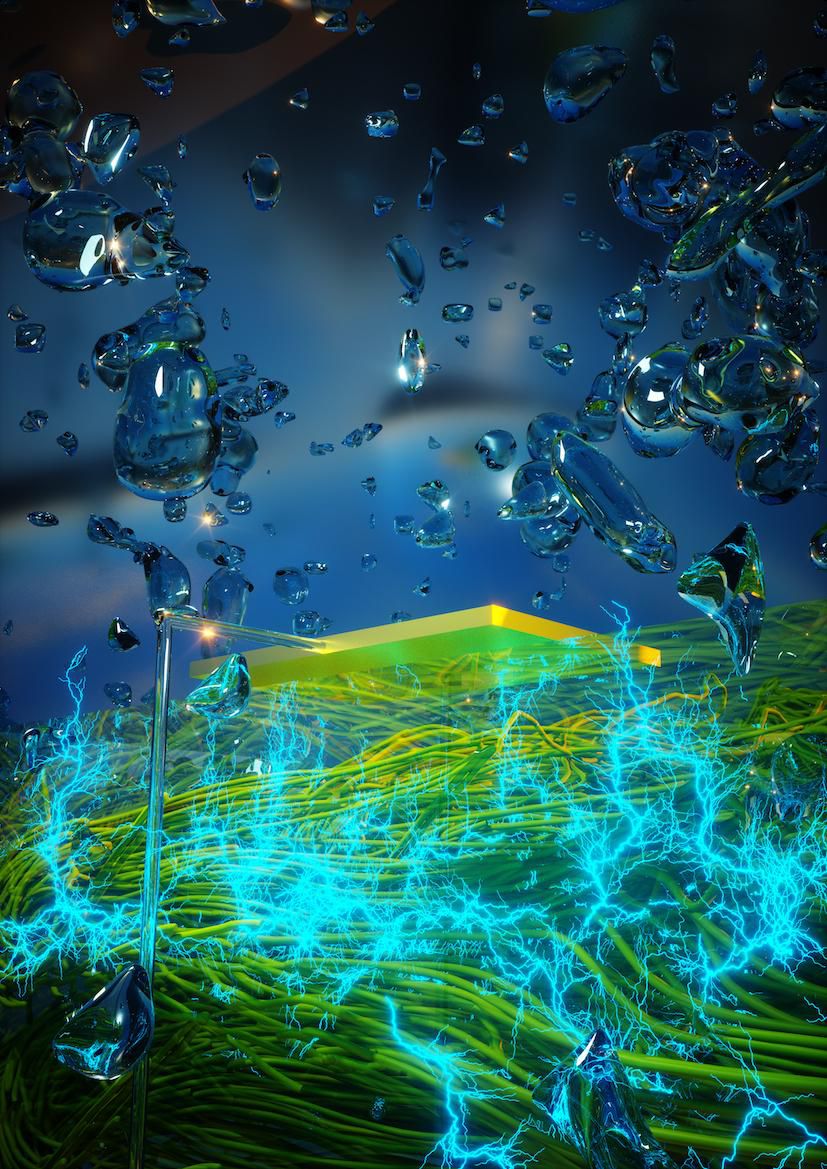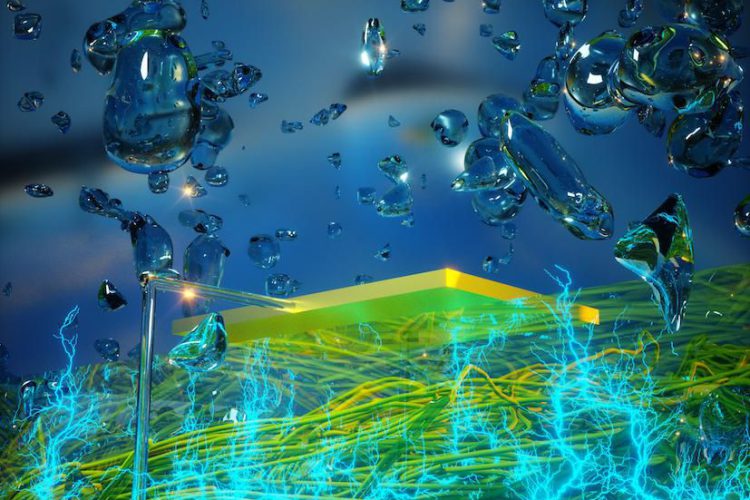
An interdisciplinary team of scientists at the University of Massachusetts Amherst has harnessed a common bacteria to make surprisingly strong electric currents—pretty much out of thin air.
“Moisture actually contains a certain amount of electrical charge,” says study author Jun Yao, a professor of electrical engineering. He and his colleagues relied on that fact to create a device that attracts ambient vapors to produce electricity. They’re calling it the “Air-gen.”
Their results, published on Friday in the journal Nature, could represent the first steps toward a method of power production far more environmentally friendly than traditional batteries, more consistent than wind energy, and more space-efficient than solar cells. But there’s a lot more work to be done before we get there.
The project began two years ago, when electrical engineering grad student Xiaomeng Liu, who is part of Yao’s lab, found that a prototype he was working on had started doing something unexpected. Even when he wasn’t running electrical current into the device, he could detect a power output. “We were initially very perplexed,” Yao says.
The device was made from “nanowires” of a protein produced by the bacterium Geobacter sulfurreducens. Its conductive properties have been the topic of years of study by another Amherst lab, that of microbiologist Derek Lovley, and the project was a collaboration between the two groups.
With testing and time, they found that this original discovery wasn’t a fluke: the protein nanowires could all do the same thing, producing a predictable amount of electricity in the right conditions. The configuration they landed on was a thin film of nanowires sandwiched tbetween two electrodes. The top electrode exposes part of the film to the air—and its moisture.
The chemical properties of the nanowires are attractive to the air’s moisture, Yao says. The difference in the amount of water in the film—more water near the surface, and less water deeper inside—creates a difference in the amount of electrical charge at different points in the film.
Yao and his colleagues report that their tiny device can currently produce 0.5 volts of electricity (pun intended). They’ve also connected five of the devices, producing 2.5 volts between them. Although the researchers say the device works best at between 40-50 percent relative humidity (your home should be between 30 and 50 percent for ideal comfort), it still produces detectable voltages between 20 percent relative humidity and 100 percent relative humidity.
“Human beings have a long history in utilizing water to produce electricity,” Yao writes in a commentary that was published alongside the paper. You could think of this device as being the grandchild of a dam, in the sense that it relies on a basic property of water—its ability to move from one place to another—to produce power.
Just like this new technology, dams derive electricity from a water gradient. Liquid moves from a place of high water (a reservoir) to a place of less water (a river). On the way, it pushes turbines that go on to produce electricity. In the case of the protein nanowires, electricity comes not from a turbine, but directly from the “moisture gradient.” It’s as if the dam could pull water out of the air before pushing it through the turbines. The electrodes are able to transmit that electricity.
But a lot of questions remain. The first, from Yao’s perspective: could the small generator they’ve designed be scaled up to produce meaningful amounts of electricity? That would mean looking into the engineering problems posed by combining a lot of these tiny devices, and seeing if it’s possible to make meaningful amounts of voltage in a bigger device. Doing that research will take more funding, which the team is working on securing.
Then, there’s the question of making enough protein nanowires. The bacteria that makes them is hard to grow in large quantities and manipulate genetically, Lovley and other colleagues report in a paper currently available in preprint but undergoing peer review. They reportedly used an easy-to-cultivate bacteria, E. coli, to grow the protein nanowires instead, and say the results were as conductive as those produced with G. sulfurreducenst.
Humanity would have no trouble finding uses for electricity that runs on air, but there’s a lot more to learn before we can guess how useful the Air-gen could be in practice. And it’s unlikely that any single technology will ever produce all of our energy, no matter how magical it sounds on paper. But any research that might yield a new renewable energy source is worth keeping an eye on.
“I think it is very interesting work,” says Xudong Wang, a University of Wisconsin Madison engineer who works with other kinds of non-organic nanowires to harvest energy. “It is always exciting to see new materials and new concepts emerge to provide renewable energy solutions.”
